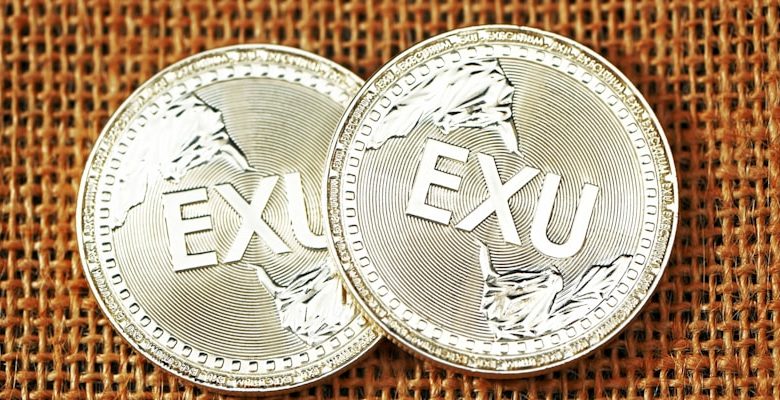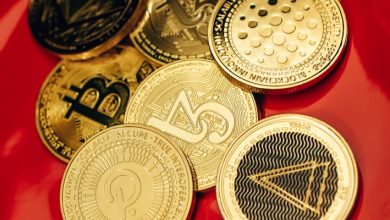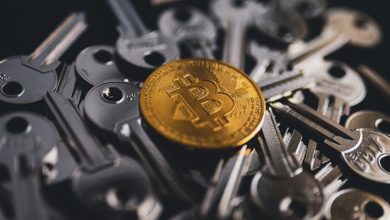The Evolution of Token Standards: ERC-20 vs. ERC-721

- Understanding the basics of token standards
- Comparing ERC-20 and ERC-721 token standards
- The rise of ERC-20 in the world of cryptocurrencies
- Exploring the unique features of ERC-721 tokens
- Challenges and limitations of ERC-20 and ERC-721 standards
- The future of token standards in blockchain technology
Understanding the basics of token standards
The basics of token standards are essential to understanding the differences between ERC-20 and ERC-721 tokens. Token standards are sets of rules and protocols that define how tokens should be implemented on a blockchain. They establish the basic functionalities and properties of tokens, such as how they can be transferred, stored, and managed.
ERC-20 is the most widely adopted token standard on the Ethereum blockchain. It is used for fungible tokens, which are interchangeable and have equal value. ERC-20 tokens are commonly used for cryptocurrencies, stablecoins, and utility tokens. They follow a set of six mandatory rules and three optional rules, providing a basic framework for token creation and management.
On the other hand, ERC-721 is a token standard used for non-fungible tokens (NFTs). Unlike ERC-20 tokens, ERC-721 tokens are unique and indivisible, each representing a distinct asset or collectible. This standard allows for the creation of digital assets with unique attributes, such as artwork, game items, or real estate.
Understanding the basics of token standards is crucial for developers and users alike. By knowing the differences between ERC-20 and ERC-721 tokens, individuals can choose the appropriate standard for their specific use case. Whether creating a fungible cryptocurrency or a unique digital collectible, selecting the right token standard is essential for achieving the desired functionality and user experience.
Comparing ERC-20 and ERC-721 token standards
When comparing the ERC-20 and ERC-721 token standards, it is important to understand the key differences between the two. ERC-20 tokens are fungible, meaning that each token is equal and interchangeable with another token of the same type. On the other hand, ERC-721 tokens are non-fungible, with each token being unique and distinct from all others.
ERC-20 tokens are commonly used for crowdfunding and as a means of payment within a specific ecosystem. They are widely adopted and have become the standard for creating new tokens on the Ethereum blockchain. In contrast, ERC-721 tokens are mainly used for creating digital assets such as collectibles, gaming items, and real estate tokens. Each ERC-721 token has a unique identifier that sets it apart from all others.
One of the main benefits of ERC-20 tokens is their simplicity and ease of use. They follow a set of standardized rules and can be easily integrated into existing platforms and wallets. This has made ERC-20 tokens the preferred choice for many projects looking to create their own tokens. On the other hand, ERC-721 tokens offer more flexibility and customization options, allowing developers to create unique and valuable digital assets.
In conclusion, both ERC-20 and ERC-721 token standards have their own strengths and use cases. ERC-20 tokens are ideal for creating fungible tokens for payments and crowdfunding, while ERC-721 tokens are perfect for creating non-fungible digital assets. Understanding the differences between these two standards can help developers choose the right token standard for their specific needs.
The rise of ERC-20 in the world of cryptocurrencies
The rise of ERC-20 tokens in the world of cryptocurrencies has been a significant development in recent years. ERC-20 tokens are a type of digital asset that is built on the Ethereum blockchain, following a set of standards that allow for seamless compatibility with various platforms and wallets. This standard has become the most widely used token standard in the cryptocurrency space, enabling the creation and exchange of a wide range of digital assets.
ERC-20 tokens have gained popularity due to their ease of use and flexibility, making them an attractive option for both developers and users. These tokens can represent anything from traditional currencies to digital assets, and they can be traded on a variety of decentralized exchanges. The growth of ERC-20 tokens has also led to the development of a vibrant ecosystem of projects and applications built on the Ethereum blockchain.
One of the key features of ERC-20 tokens is their interoperability, which allows them to be easily integrated with other decentralized applications and smart contracts. This has made ERC-20 tokens a preferred choice for developers looking to create new applications and services on the Ethereum platform. Additionally, the standardization of ERC-20 tokens has helped to increase liquidity in the cryptocurrency market, as these tokens are widely accepted and can be easily traded on various exchanges.
Overall, the rise of ERC-20 tokens has had a transformative impact on the world of cryptocurrencies, providing a solid foundation for the development of new digital assets and decentralized applications. As the popularity of ERC-20 tokens continues to grow, they are likely to play an increasingly important role in shaping the future of the cryptocurrency industry.
Exploring the unique features of ERC-721 tokens
ERC-721 tokens are unique in the world of cryptocurrencies for their non-fungible nature. Unlike ERC-20 tokens, which are interchangeable, ERC-721 tokens are each unique and indivisible. This uniqueness allows for the creation of digital assets like collectibles, game items, and even real estate on the blockchain.
One of the key features of ERC-721 tokens is their ability to represent ownership of a specific asset. Each token is distinct, with its own set of properties and metadata that define its individuality. This makes ERC-721 tokens ideal for creating digital representations of physical assets or unique digital creations.
Another important aspect of ERC-721 tokens is their ability to be traded on decentralized marketplaces. This opens up a world of possibilities for creators and collectors alike, as they can buy, sell, and trade their tokens without the need for intermediaries. This peer-to-peer trading model is revolutionizing the way digital assets are bought and sold.
Challenges and limitations of ERC-20 and ERC-721 standards
One of the challenges of ERC-20 and ERC-721 standards is their limitations in terms of flexibility. While ERC-20 tokens are widely used for crowdfunding and ICOs, they lack the ability to represent unique assets or non-fungible tokens. On the other hand, ERC-721 tokens allow for the creation of unique, indivisible tokens, but they are not as easily interchangeable as ERC-20 tokens. This can limit their use cases in certain applications where fungibility is a key requirement.
Another challenge is the complexity of implementing ERC-721 tokens compared to ERC-20 tokens. ERC-721 tokens require additional logic to manage unique token IDs and ownership, which can make them more difficult to work with for developers. This added complexity can also result in higher gas costs for transactions involving ERC-721 tokens, which may be a deterrent for some users.
Furthermore, interoperability between ERC-20 and ERC-721 tokens can be a challenge. While both standards are widely supported in the Ethereum ecosystem, transferring tokens between the two standards can be cumbersome and may require additional development work. This lack of seamless interoperability can limit the potential use cases for tokens that require functionalities from both standards.
In conclusion, while ERC-20 and ERC-721 standards have revolutionized the tokenization of assets on the Ethereum blockchain, they come with their own set of challenges and limitations. Developers and users need to carefully consider these factors when choosing between the two standards for their tokenization needs.
The future of token standards in blockchain technology
The future of token standards in blockchain technology is an exciting and rapidly evolving landscape. While ERC-20 tokens have been the dominant standard for quite some time, ERC-721 tokens have recently gained popularity due to their unique capabilities in representing non-fungible assets. As the blockchain industry continues to grow and mature, we can expect to see even more token standards emerge, each tailored to specific use cases and functionalities.
ERC-20 tokens have been widely used for creating fungible tokens, which are interchangeable and can be divided into smaller units. These tokens have been instrumental in fueling the growth of the decentralized finance (DeFi) ecosystem, enabling a wide range of financial applications to be built on the Ethereum network. However, as the demand for more complex and diverse digital assets grows, there is a need for token standards that can represent unique and indivisible assets.
ERC-721 tokens have filled this gap by introducing the concept of non-fungible tokens (NFTs), which are one-of-a-kind digital assets that cannot be replicated or divided. This has opened up new possibilities for industries such as art, gaming, real estate, and collectibles, where the uniqueness and ownership of assets are of utmost importance. The success of projects like CryptoKitties and NBA Top Shot has demonstrated the potential of ERC-721 tokens in creating new markets and use cases within the blockchain space.
Looking ahead, we can expect to see further innovation in token standards as developers continue to explore the possibilities of blockchain technology. New standards may emerge that combine the features of both ERC-20 and ERC-721 tokens, allowing for greater flexibility and interoperability between different types of assets. Additionally, advancements in scalability and interoperability solutions may pave the way for even more complex token standards that can support a wider range of use cases.
In conclusion, the future of token standards in blockchain technology is bright and full of potential. As the industry continues to evolve, we can expect to see new standards emerge that cater to the diverse needs of users and developers alike. Whether it’s creating fungible tokens for financial applications or representing unique assets through NFTs, token standards will play a crucial role in shaping the future of decentralized technology.



